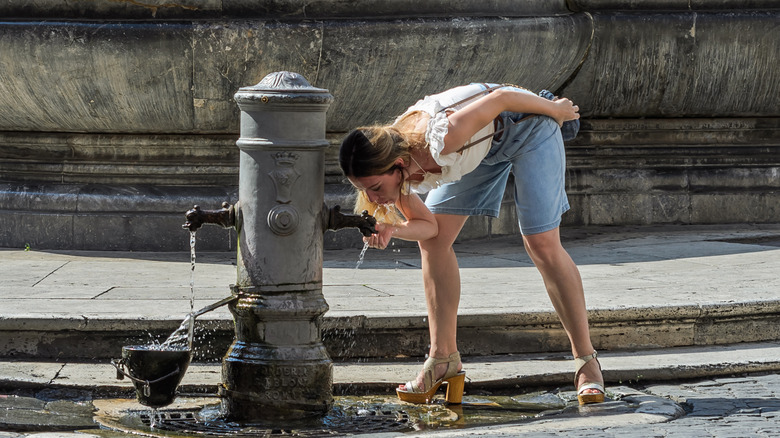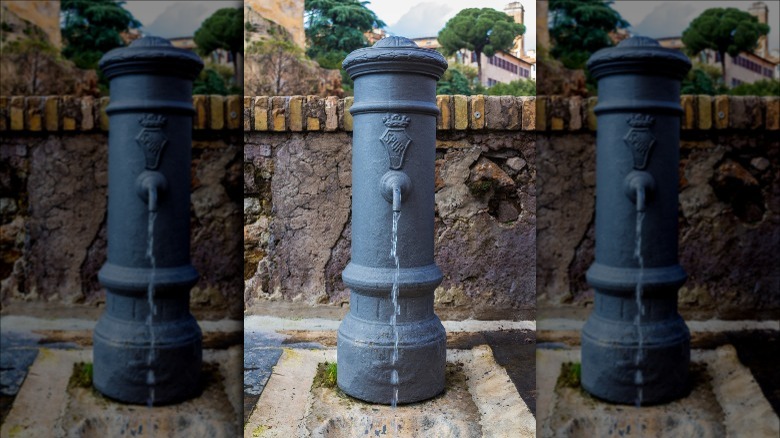The Real Reason You Should Never Buy Water In Rome
Anyone else remember when bottled water became a thing? As hard as it is to believe nowadays — in an era when the beverage is the most-consumed drink in the United States (via Beverage Marketing Corporation) — bottled water was a niche product for many, many years. In the 1970s, according to Serious Eats, Americans drank only about one and a half gallons of bottled water per person per year. Compare that to 2019's average yearly consumption of 44 gallons per person (via Statista). In the 1990s, as interest in bottled drinks grew overall, soda giants including Pepsi-Cola and later Coca-Cola got into the bottled water game, and the rest is basically history.
Many of us have gotten used to picking up a cool bottle of water when we're out and about, particularly when we're traveling and might be out strolling in the sun. But there's one popular destination where neither tourists, nor locals have to worry about quenching their thirst: You don't have to buy bottled water in Rome.
Ancient Roman fountains provide potable water 24/7
Have you ever been to Rome? The ancient Italian city is a perennial draw for tourists from all over the world. Post-pandemic tourism figures are a little wonky, as travel has been greatly affected, but in 2018, the Eternal City attracted a whopping 15.2 million visitors (via Wanted In Rome). Between the well-preserved ancient architecture, the world-class museums, and the indulgent Italian food, who wouldn't want to go to Rome?
But did you know that Rome boasts a little-known draw for thirsty tourists and residents alike? It's the city's extensive network of "nasoni," or "big noses," large public fountains that supply clean, cool, sanitized water that flows from the Appenine mountains (via Rome Vacation Tips). These fountains provide thirsty Rome-dwellers and visitors with a constant supply of free potable water, except in times of severe drought (via Daily Sabah). There are so many of these fountains in the city — about 2,500 — that they're easy to stumble upon. But if you happen to be touristing under the hot Roman sun and can't find one, there's an app for that: Waidy, which provides a map of where to find the fountains.

